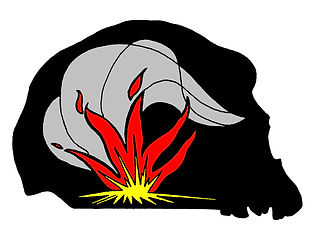OUR STORY
It is not the primitive of tooth and claw, the fear of animals in
the night, but the primitive of dream and reverie and close companionship. The warmth of a good fire is remarkably like the warmth of love, and sitting around fires at night makes us think about our connections with nature. It is in the pursuit of subtle and elusive things, rather than In the satisfaction of hunger, that staring into fires made man self-conscious and thoughtful, and thus set him apart from the rest of creation. Peter Steinhart, The Primal Lure of Firelight

From deep within the caverns of time, like-minded prehistorians have felt an irresistible urge to come together around the campfire and share ideas. This urge to share has reverberated throughout the centuries and set mankind apart from our fellow beasts. It is the fulfilling of this primal urge which prompted the formation of the Society of Primitive Technology.
During the weekend of November 11-12, 1989, ten leaders in the field of experiential primitive skills gathered around the fire at the Schiele Museum's Center for Southeastern Native American Studies in Gastonia, North Carolina to organize a new national organization -- The Society of Primitive Technology.
Conceived by Dr. Errett Callahan, pioneering reconstructive archaeologist and director of Piltdown Productions in Lynchburg, Virginia, the society sought to promote the practice and teaching of aboriginal skills, foster communication between teachers and practitioners and set standards for authenticity, ethics and quality.
Founding members present represented a variety of special interests within the field of primitive technology. The weekend's discussions explored the society's goals and purposes from many points of view; audience (abos, academics, educators, interpreters, the man on the street, etc.), ethical and environmental concerns, public relations, education/outreach, archaeological responsibility, special events, craftsmanship,
workshops and access to resources - to name a few.
"This is an historic occasion" said Callahan, "the beginnings of a national network." Plans were made to hold the annual meetings at a variety of locations in the coming years. Two issues of the Society newsletter are planned for 1991, and an on-going system of communication between charter members was established to share information, answer questions, and conduct society business. For all involved in the study and practice of primitive skills, this marks the birth of an exciting new era.
The Society functioned from 1989 until the Board decided to disband in 2013. The Bulletin continued under the direction of the publisher - Backtracks - until the Fall of 2016 with issue #50 being it's final release. Quite an undertaking for a small specialized publication - 25 years in operation. The work of the SPT continues, as we continue to make The Bulletin - the voice of the SPT - available to the public at primitive.org.
Being a part of my race's genetic memory wasn't good enough. I wanted it as part of my own conscious memory, reliving in a small way every minute of man's ascent: foraging like a beast in the meadow, cracking two stones
together at the dawn of history, preparing for the hunt atop in Ice Age flint mine, planting the first corn and seeds of civilization, building a boat of birch to carry me against a river that defied time. Each man alive - red, white or
otherwise - is what he is because of these things. Jim Dina The Voyage of the Ant



Our logo was designed by David Callahan, using his and Jack Cresson's sketches, with suggestions from the board. The skull of our common ancestor. Neanderthal, becomes a cavern into which we peer to see a campfire swirling about, symbolizing the spirit of our movement. The ancient technologies, long forgotten, await our rediscovery, to unite us all.